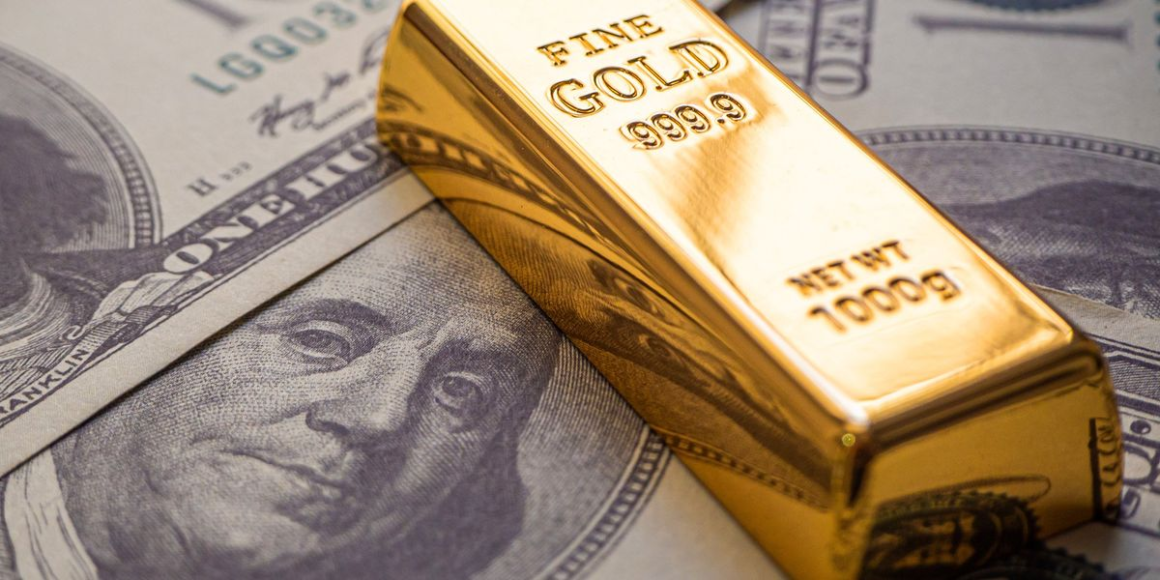Read on to learn what the gold standard is, why it ended, what Trump has said about bringing back the gold standard — and what could happen if a gold-backed currency ever comes into play again.
What is the gold standard and how does it work? Put simply, the gold standard is a monetary system in which the value of a country’s currency is directly linked to the yellow metal. Countries using the gold standard set a fixed price at which to buy and sell gold to determine the value of the nation’s currency.
Under the gold standard, transactions no longer have to be done with heavy gold bullion or gold coins. The gold standard also increases the trust needed for successful global trade — the idea is that paper currency has value that is tied to something real. The goal is to prevent inflation as well as deflation, and to help promote a stable monetary environment.
The gold standard was first introduced in Germany in 1871, and by 1900 most developed nations, including the US, were using it. The system remained popular for decades, with governments worldwide working together to make it successful, but when World War I broke out it became difficult to maintain. Changing political alliances, higher debt and other factors led to a widespread lack of confidence in the gold standard.
The Bretton Woods agreement was born at the UN Monetary and Financial Conference, held in Bretton Woods, New Hampshire, in July 1944. Currencies were pegged to the price of gold, and the US dollar was seen as a reserve currency linked to the price of gold. This meant all national currencies were valued in relation to the US dollar since it had become the dominant reserve currency. Despite efforts from governments at the time, the Bretton Woods agreement led to overvaluation of the US dollar, which caused concerns over exchange rates and their ties to the price of gold.
By 1971, US President Richard Nixon had called for a temporary suspension of the dollar’s convertibility. Countries were then free to choose any exchange agreement, except the price of gold. In 1973, foreign governments let currencies float; this put an end to Bretton Woods, and the gold standard was ousted.
Since the 1970s, most countries have run on a system of fiat money, which is government-issued money that is not backed by a commodity. The US dollar is fiat money, which means it is backed by the government, but not by any physical asset.
The value of money is set by supply and demand for paper money, as well as supply and demand for other goods and services in the economy. The prices for those goods and services, including gold and silver, can fluctuate based on market conditions.
Emphasizing how unusual Trump’s support for the international gold standard is, Joseph Gagnon, a senior fellow at the Peterson Institute for International Economics, told the news outlet, “(It) seems like nothing that’s happened since the Great Depression.” Gagnon, who has also worked for the Fed, added, “You have to go back to Herbert Hoover.”
Trump’s term as president passed without a return to the gold standard, and the consensus seems to be that it’s highly unlikely that this event will come to pass — even if he takes the helm once again. Even many ardent supporters of the system recognize that going back to it could create trouble.
As per the Motley Fool’s Williams, economists largely agree that moving to a lower-key version of the gold standard in 1933 was “a big reason why the US emerged from the Great Depression,” and a return would be a mistake.
The fact that the US doesn’t have enough gold in its reserves to pay back all its debt poses a huge roadblock to returning to the gold standard. The country would have to exponentially replenish its gold reserves in advance of any return to the gold standard.
That means the US dollar would be severely devalued, causing inflation, and since global trade uses the US dollar as a reserve currency, it would grind to a halt. Conversely, returning to the gold standard at a low gold price would cause deflation.
Returning to the gold standard would have a huge impact on all levels of the US economy and make it impossible for the Fed to offer fiscal stimulus. After all, if the US had to have enough gold reserves to exchange for dollars on an as-needed basis, the Fed’s ability to print paper currency would be incredibly limited.
“Transitioning to a gold standard during an economic crisis would severely limit monetary policy options and could lead to economic instability,” Dewitt warned.
For that reason, a return to the gold standard would also expose the US economy to the yellow metal’s sometimes dramatic fluctuations — while some think that gold would offer greater price stability, it’s no secret that it’s been volatile in the past. Looking back past the metal’s recent stability, it dropped quite steeply from 2011 to 2016.
“You’ve assigned us the job of two direct, real economy objectives: maximum employment, stable prices. If you assigned us (to) stabilize the dollar price of gold, monetary policy could do that, but the other things would fluctuate, and we wouldn’t care,” Powell said. “There have been plenty of times in fairly recent history where the price of gold has sent a signal that would be quite negative for either of those goals.”
As can be seen, returning to the gold standard would be a complex ordeal with pros and cons. The likelihood of the US bringing back the gold standard is slim, but no doubt the question will continue to be up for debate under future presidents.
This is an updated version of an article first published by the Investing News Network in 2017.
Securities Disclosure: I, Melissa Pistilli, hold no direct investment interest in any company mentioned in this article.


Leave a Reply